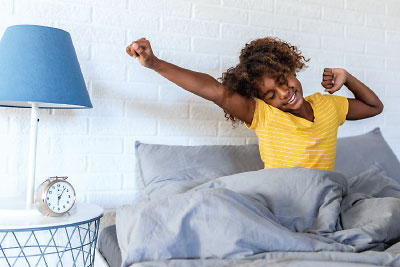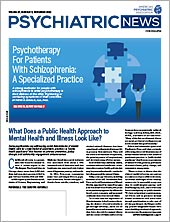Four weeks of nightly exposure to extremely short light flashes during sleep combined with weekly cognitive-behavioral therapy (CBT) sessions aimed at promoting earlier bedtimes helped sleep-deprived adolescents go to bed earlier and sleep longer, researchers at Stanford University School of Medicine found.
This strategy was one of several novel interventions that improved adolescent sleep and mental health reported at the annual meeting of the American Academy of Sleep Medicine and the Sleep Research Society last summer.
Jamie M. Zeitzer, Ph.D., an associate professor of psychiatry and behavioral sciences and co-director of Stanford’s Center for Sleep and Circadian Sciences, and his team recruited 102 adolescents in grades 9 to 12 who went to bed late and had trouble getting up in the morning.
The researchers compared active light therapy with sham light therapy, both described below, with and without CBT focused on sleep, in a four-week double-blind, randomized placebo-controlled trial conducted during the school year.
Every night for four weeks, the active light therapy groups received a 3-millisecond light flash every 20 seconds starting three hours before their target weekday wake time (without CBT) or two hours before wake time (with CBT). Those assigned to sham therapy received three 1-minute light pulses an hour starting three hours before their target weekday wake time (without CBT) or two hours before wake time (with CBT). Those receiving CBT attended 50-minute in-person sessions once a week for four weeks.
Teens receiving the combination therapy fell asleep 50 minutes earlier and slept 43 minutes longer each night, Zeitzer said. Few reported being aware of the light flashes. Neither light therapy alone nor CBT alone affected bedtime or sleep duration.
“Our data are consistent with the theory that flash therapy advanced the timing of the circadian clock, enabling teenagers to initiate sleep at an earlier clock hour,” Zeitzer and colleagues wrote in JAMA Network Open in September 2019.
“The circadian clock elicits a strong wake-promoting signal in the hours immediately before normal bedtime,” the researchers noted. “Those in the light plus CBT group had greater sleepiness in the late evening, consistent with having their internal clock moved to an earlier time.”
Long-term monitoring would be an important next step, they said, to assess ongoing acceptance of the light intervention therapy and to determine if the beneficial effects of light plus CBT can be maintained for months or years.
Grants from the National Institute of Child Health and Human Development (NICHD), Lucille Packard Foundation for Children’s Health, and Stanford Child Health Research Institute supported this research.
In an NICHD-funded study that started in September, Zeitzer and his team will assess the impact of light flash therapy and CBT on adolescents’ sleep, academic performance, and mood regulation for an entire year.
Applying Habit Formation Science
Unhealthy sleep habits often need to be dismantled before healthier ones can be adopted, Allison G. Harvey, Ph.D., said at the meeting.
Habits such as starting to watch a movie or looking at email near bedtime are hard to abandon, said Harvey, a professor of psychology and director of the Golden Bear Sleep and Mood Research Clinic at the University of California, Berkeley. Clinicians often need to work with teens individually to develop attractive substitutes, such as journaling or practicing yoga at bedtime. “Instilling a new habit requires repetition,” she said, “lots of repetition.”
A spinoff from Harvey’s habit-formation studies encourages good sleep habits via text messages provided on a mobile phone. Lauren Asarnow, Ph.D., an assistant professor of psychiatry at the University of California, San Francisco, School of Medicine and colleagues developed their BrightMobile program to help youth in low-income communities. This population, Asarnow said, has a higher prevalence of sleep problems and lower access to services than peers in higher income areas.
They recruited 52 adolescents aged 12 to 18 from a primary care clinic and the community at large to use BrightMobile for eight weeks. Participants watched videos on sleep and mood, kept a sleep diary, and received text messages congratulating them for sticking to their self-selected bedtime the previous night or offering recommendations to support their goals, for example.
Most participants completed the program and reported they slept longer and more soundly on more regular schedules. Depression symptoms declined in both the subset of adolescents with clinically significant depression symptoms at the outset and the others three months after treatment ended, Asarnow told Psychiatric News. The researchers are patenting their program. ■

